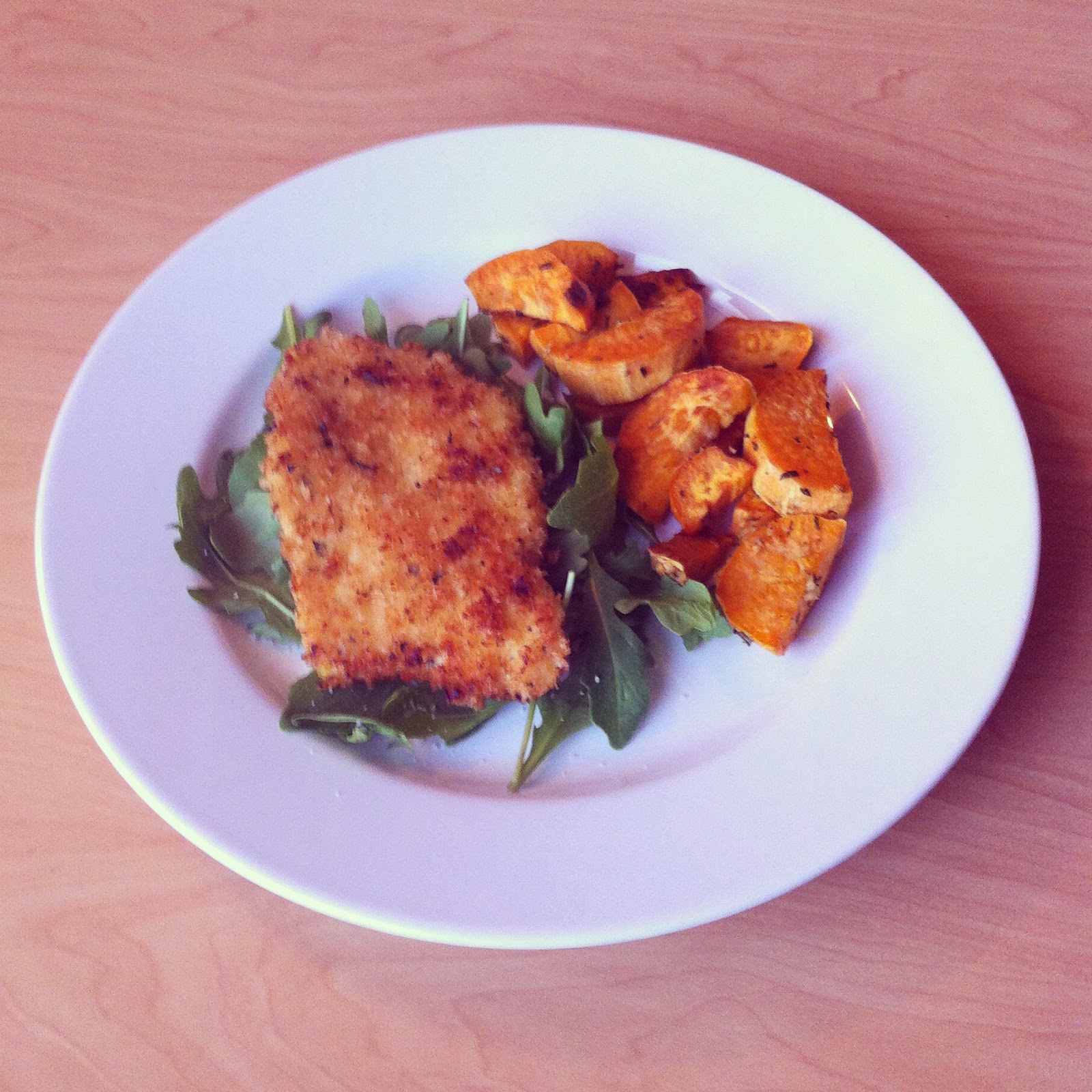We should acknowledge from the start that dealing with a whole, raw chicken can be intimidating. Ina's refrain of "How easy is that?" might not be the most encouraging when you're staring down the back (front?) end of a chicken. It's messy, and a little icky, but ultimately a roast chicken is a foundational kitchen skill and can be mastered with practice. Until you master the recipe, chicken can be really forgiving. In a finals week haze I accidentally roasted this chicken upside down. It was still delicious and wonderful, and yours will be too! This recipe is also great for your student affairs schedule; it is a little more time consuming than one of my quick dinners, but the yield from a whole chicken can feed you for the rest of the week. Repurpose it by making chicken enchiladas, chicken salad, soups, and pastas with the leftover meat.
Let's start with the prep work. A compound butter is just butter that has been flavored with herbs, fruit, or aromatics. For this chicken we will mix salt, pepper, rosemary, sage, and thyme with half a stick of room temperature butter. I like to use a fork to throughly combine the butter and herbs. Place the butter to the side while you prepare the rest of the chicken. If you don't have a roasting pan with a rack simply make a spiral with some tin foil and place it at the bottom of a baking dish. You can also use diced root vegetables (potatoes, carrots, turnips, fennel, etc.) to elevate the chicken.
Remove the giblets from the cavity and save them for gravy. Pat the chicken dry inside and out to ensure a delicious crispy skin. Season the inside of the cavity with salt and pepper and stuff it with two halves of a lemon, a quartered yellow onion, eight whole cloves of garlic, and a bunch of thyme and rosemary. Make sure you do not completely fill the cavity with the aromatics, they should rest inside but not crowd the cavity which would throw off the cooking time. Next pull the skin on the breast up, and massage the breasts with the compound butter so it is evenly distributed underneath the skin. Any extra butter can be rubbed on top of the skin. Place the chicken in a 425 degree oven and roast for 1 and a half hours, or until the juices run clear.
Remove from the oven and let rest for 20-30 minutes. This resting period is crucial to ensure a juicy bird. Use this time to make gravy and to sauté some green beans and garlic until they are just cooked and remain crisp. Avoid the temptation to bring the bird to the table whole - it may be a nice presentation, but carving table side is unwieldy. I'll defer to the wonderful step by step photography in this Serious Eats article for carving advice. This carving method is the best way to ensure everyone gets a piece of what they want.
Roast Chicken
Adapted from Ina Garten
Ingredients
- 1 5-6 pound whole chicken
- 1 yellow onion
- 1 lemon
- 8 cloves of garlic
- 1 bunch of thyme
- 4 tbsp. butter
- 2 sage leaves, chopped
- 1/2 tbsp. chopped fresh thyme
- 1/2 tbsp. chopped fresh rosemary
Instructions
- Use a fork to combine chopped herbs, salt, and pepper with room temperature butter and set aside.
- Halve lemon, chop onion into quarters, and peel garlic.
- Remove chicken from packaging and pat dry. Stuff cavity with lemons, onion, and garlic, and additional bunch of thyme.
- Use your fingers to open space between the skin and breast, massage butter mixture into the space between the skin and breast, rub any leftover butter on the outside of the skin.
- Roast at 425 degrees for 1.5 hours, or until juices run clear.
- Allow to rest for 20-30 minutes before carving.


































